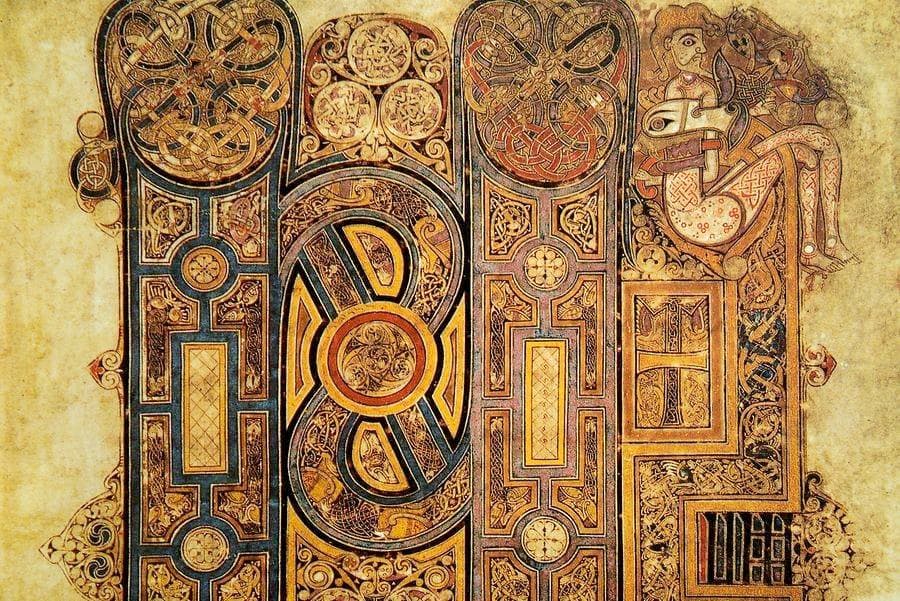The Book of Kells contains lavishly decorated copy, in Latin, of the four gospels. It has long been associated with St Colum Cille (c 521-597 AD) who founded his principal monastery on the island of Iona, off the west coast of Scotland, in about 561.
The Book of Kells was sent to Dublin around 1653 for reasons of security during the Cromwellian period. It came to Trinity College through the agency of Henry Jones, after he became bishop of Meath in 1661.
The Book of Kells.
The Book of Kells is referred to in the Annals of Ulster as being "The Chief Relic of the Western World. " It contains 678 illustrated calf-skin or vellum pages with the last two being without illustration. The major part of the Book was probably written in the Columban Monastery's scriptorum on the island of Iona, in Scotland and was coloured using natural dyes, made by the monks. The ink has not faded in 1000 years.
There is a lot of nonsense talked about the four symbols that are used in the Book of Kells:- LION ; MAN ; CALF and EAGLE. Most historians say that they are supposed to represent the four Apostles. They do NOT represent the Apostles but represent the Twelve Tribes of Israel, to whom the Apostles were sent, by Christ.
The four symbols are the four Brigade-Emblems of the Twelve Tribes of Israel, who camped around "The Tabernacle " in the wilderness during their "forty year punishment and wandering", in the wilderness under Moses.
